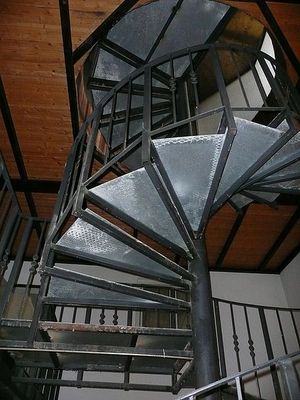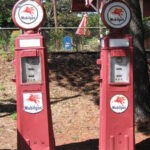History
In the 19th century the firemen used hand powered water pumps attached to hoses for all of the town’s firefighting needs. When the steam engine came into play, during the industrial revolution, it would prove to be a valuable tool in firefighting. Not only did it pump the water faster than the hand pumps, the water would travel a further distance. This allowed for the firemen to be further away from the fire for safety, and also fight fires in taller buildings. In 1853, engineers in Cincinnati displayed and tried the first steam powered water pumper. With the hand pumps no longer the popular choice, the firemen had to find some way to haul their new found equipment to the scene of the fires. Steam may have made a faster pumper, but when used for travel, it was too slow. The steam engines were also too heavy to be pulled by hand. The other option available to them at the time was a team of horses.
Significance
After the introduction of the steam engine in Ohio, it spread throughout North America and Europe and fire houses began to accommodate more than the firefighters. Most of the stations in this day, were built as large, two-story storage sheds. This made it easy to make room for the horses. As the horses had to be attached to the steam water pump before it could go, the firemen slept upstairs and the horses downstairs. The horses, often drawn to the firemen and the smells of food, would leave the stable areas and climb to the upper levels.
Function
To keep the horses on the lower level, as horses do not walk down the stairs as well as they do up them, the stations began to install spiral staircases. This was thought to not only keep the horses in their stalls, but would help the firemen run down the stairs faster. Today, most of the spiral staircases and the brass poles are obsolete. Kept only as a reminder of days past and a historical landmark.
Replacement
Spiral stairs were used from the 1850’s, when the steam engine water pump replaced the hand operated ones until the 1870’s when David Kenyon invented the fire pole. When the fire pole was invented people noticed that David Kenyon’s firefighters would reach the scenes faster than any other Chicago fire station. The spiral staircase was in fact slowing the firefighters down. In 1880, the fire pole concept was adopted by Boston. Once Boston embraced the idea, the fire pole spread across the nation. Presently, fire poles are illegal in Washington state (new construction) and pole sliding is not taught in many fire academies. This was brought on largely because of all of the injuries firefighters incurred from the pole itself. There have been countless broken ankles, compression back injuries and even deaths associated with pole sliding.
Present Day
After the invention of the internal combustion engine, the need for horses in the fire station became a thing of the past. Most fire stations that still have the spiral staircase, or the brass pole that was to replace it, keep these as treasured memories. In fact, firemen that give tours of fire stations containing these poles will slide down them for the kids, but remark that they spend more time polishing the pole that sliding down it. Most of the newer fire stations build are only one-story tall, and therefore require no pole or set of stairs. With that and the growing concern for safety of the firemen the pole and the spiral staircases have been all but forgotten.
Why Fireman Use Spiral Staircases
http://www.ehow.com/about_5339217_fireman-use-spiral-staircases.html
Fire Poles Slide Into Disuse
http://articles.latimes.com/2002/jul/01/local/me-poles1/3
Why Do Many Firehouses Have Circular Stairways?
http://www.ehow.com/about_6134840_do-many-firehouses-circular-stairways_.html
The History of Firehouses
http://www.usd116.org/ums/apple/service/department/equip/fhouse.html




